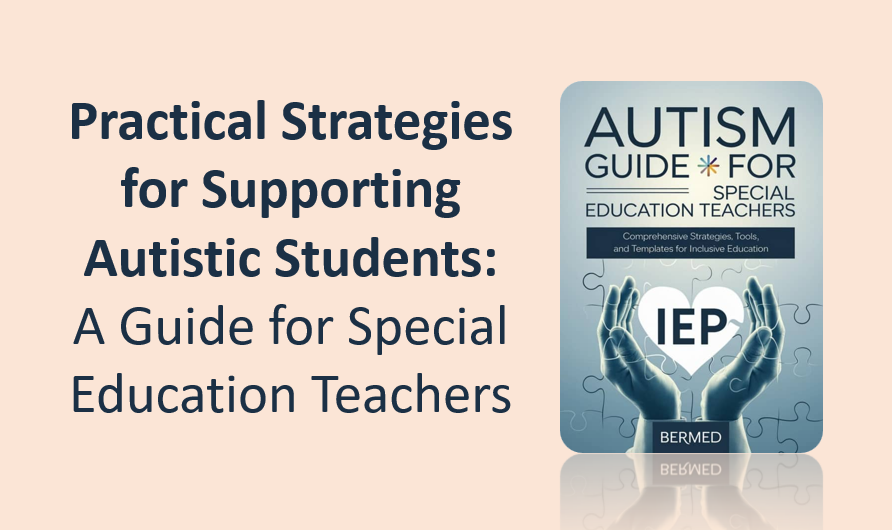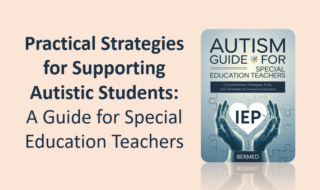Introduction
For many students, tests are more than just academic assessments—they’re sources of intense fear, stress, and uncertainty. Test anxiety is a growing concern among educators, counselors, and parents alike. It can significantly hinder performance, erode self-esteem, and create a cycle of academic distress that is hard to break. Supporting students with test anxiety is not only essential for academic achievement but also for nurturing their emotional resilience and long-term well-being.
This guide dives into evidence-based strategies that empower educators to recognize, support, and uplift students dealing with test anxiety, helping them transform fear into focus.
Understanding Test Anxiety
Test anxiety is a psychological condition where a person experiences extreme stress, fear, or apprehension before or during test-taking. It’s more than just nerves—it can interfere with learning, memory recall, and logical reasoning. Understanding its roots is the first step in managing it effectively.
Common Causes of Test Anxiety
- High academic expectations (from self or others)
- Fear of failure or disappointing others
- Lack of preparation or ineffective study habits
- Past negative experiences with tests
- Perfectionism and self-critical thinking
Symptoms and Signs
Students with test anxiety may experience:
- Physical symptoms: sweating, nausea, headaches, racing heart
- Emotional symptoms: panic, fear, helplessness, irritability
- Cognitive symptoms: blanking out, trouble concentrating, negative self-talk
The Impact on Learning and Health
Chronic test anxiety doesn’t just affect grades—it can damage mental health, discourage effort, and lead to school avoidance. When left unaddressed, it cultivates long-term patterns of academic avoidance and lowered self-efficacy.
Identifying Students with Test Anxiety
While some students vocalize their struggles, many internalize their anxiety. It’s crucial for educators to be attentive to both verbal and non-verbal cues.
Observational Cues in the Classroom
Be on the lookout for students who:
- Frequently visit the nurse or complain of illness during test days
- Exhibit avoidance behaviors—absenteeism, missed homework, excuses
- Display nervous habits like tapping, fidgeting, or avoiding eye contact
Common Behaviors and Complaints
Students may say things like:
- “I know the material, but I always blank during tests.”
- “I feel sick just thinking about tomorrow’s quiz.”
- “I studied, but I can’t focus when I’m in the exam room.”
The Role of Self-Reporting and Peer Input
Encouraging open conversations about stress can help students self-identify their struggles. Sometimes, peers may even notice patterns in friends that adults miss. Creating a culture where talking about mental health is normalized makes early intervention easier and more effective.
The Role of Educators and School Counselors
Educators and school counselors are the first line of defense against the negative effects of test anxiety. Their collaborative roles are critical in identifying issues early and building an environment where students feel understood and supported.
Importance of Early Intervention
Early recognition of test anxiety helps prevent long-term academic disengagement. When educators intervene with compassion and awareness, they can redirect a student’s trajectory, helping them regain confidence before anxiety becomes a chronic issue.
Teamwork Between Teachers and Mental Health Professionals
A unified approach works best. Teachers can share behavioral insights, while counselors offer psychological support and coping strategies. Together, they create tailored action plans and serve as a safety net for anxious students.
Training and Professional Development
Schools should provide regular training on mental health awareness, including recognizing anxiety symptoms, de-escalation strategies, and communication techniques to make students feel safe and heard.
Creating a Supportive Learning Environment
Before addressing testing techniques, it’s crucial to build a foundation of trust and emotional safety. A supportive learning environment acts as a buffer against anxiety and fosters healthy student-teacher relationships.
Safe Spaces and Inclusive Practices
Designate calming areas in the classroom or offer flexible seating for students prone to anxiety. Incorporate visual aids, sensory tools, or quiet corners to reduce overstimulation.
Encouraging Open Communication
Invite students to share how they feel about upcoming assessments. Weekly check-ins, anonymous feedback forms, or journaling prompts can be simple but effective tools to give them a voice.
Reducing Academic Pressure
While maintaining high standards is important, emphasizing effort over perfection reduces the fear of failure. Reframe tests as learning tools rather than judgment days.
Practical Classroom Strategies
Small classroom adjustments can yield big results. The goal is to minimize anxiety triggers while maximizing clarity and student confidence.
Flexible Assessment Formats
Allow students to demonstrate knowledge through alternative formats like oral presentations, open-book quizzes, or project-based assessments. Choice can ease anxiety and enhance motivation.
Providing Study Guides and Practice Exams
Uncertainty fuels anxiety. Providing structured review materials and mock tests builds familiarity and reduces fear of the unknown.
Extended Time and Accommodations
Offer extended time or a quiet testing environment when needed. These accommodations don’t give an unfair advantage—they level the playing field for students managing anxiety.
Teaching Coping Mechanisms
Equipping students with emotional tools to manage stress is just as important as academic instruction. By integrating coping mechanisms into the classroom culture, educators empower students to face anxiety with resilience and control.
Mindfulness and Relaxation Techniques
Introduce brief mindfulness practices, such as guided visualizations or body scans, at the start of each class. Even two minutes of calm breathing can recalibrate a student’s mindset before a test.
Positive Self-Talk and Thought Reframing
Help students identify and challenge their negative inner dialogue. Replace “I’m going to fail” with “I’ve prepared and I’ll do my best.” Visual affirmations and mantra cards can support this shift in thinking.
Breathing Exercises and Grounding Techniques
Simple strategies like box breathing (inhale for 4, hold for 4, exhale for 4, hold for 4) or 5-4-3-2-1 sensory grounding can reduce panic and improve concentration. Practice these regularly so students can use them instinctively during stress.
The Importance of Preparation and Study Skills
One of the most empowering antidotes to test anxiety is effective preparation. Teaching students how to study smart—not just hard—helps reduce uncertainty and builds academic confidence.
Time Management Skills
Introduce planning tools such as calendars, task breakdowns, or weekly goal-setting. Teach students how to divide their study material into manageable chunks to avoid last-minute cramming.
Note-Taking Strategies
Encourage structured methods like the Cornell or mind-mapping system to help students retain and review key concepts more effectively. Good notes double as powerful study tools.
Study Plans and Review Sessions
Help students build weekly or monthly review plans. Organize low-stakes review sessions that encourage collaborative learning and reduce the isolation of studying alone.
Encouraging Healthy Lifestyle Choices
What happens outside the classroom has a direct impact on how students perform inside it. A balanced lifestyle is a crucial, often overlooked, element of managing test anxiety.
Sleep Hygiene and Nutrition
Discuss the importance of consistent sleep schedules, especially before assessments. Educate students on the brain-boosting benefits of a nutritious breakfast versus sugary or caffeinated snacks.
Physical Activity and Stress Relief
Daily movement—whether it’s walking, stretching, or sports—helps regulate mood and reduce anxiety. Encourage participation in physical education or even offer “brain breaks” during study periods.
Balancing Academics with Downtime
Remind students that rest and recreation are not indulgences—they’re necessary. Promote healthy boundaries around homework, screen time, and relaxation to create a sustainable academic rhythm.
Leveraging Technology and Tools
In today’s digital age, technology offers a wide range of tools that can support students in managing test anxiety more independently and effectively. When used thoughtfully, these resources can boost confidence and calm.
Apps for Focus and Anxiety Management
Introduce students to apps like Headspace, Calm, or Breathe2Relax, which guide users through meditation, breathing exercises, and stress reduction. Focus tools like Forest or Pomodoro timers can help manage study sessions more efficiently.
Online Practice Quizzes and Flashcards
Platforms such as Kahoot!, Quizlet, or Brainscape make studying interactive and fun. The repetition and gamification can alleviate test-related stress by enhancing familiarity with the material.
Meditation and Breathing Tools
Chrome extensions, YouTube channels, and smart speakers often offer built-in features for short meditations or calm music. Create a class playlist or a digital relaxation toolkit for students to access as needed.
Communicating with Parents and Guardians
Effective support for test-anxious students goes beyond school walls. Strong communication with families creates consistency in expectations and emotional reinforcement.
Keeping Parents Informed
Send home newsletters or emails outlining classroom strategies being used to reduce test anxiety. Let parents know how they can reinforce these efforts at home.
Offering Home Strategies for Support
Recommend routines such as setting a dedicated homework space, limiting distractions, and practicing calming routines together before test days. Encourage parents to focus on progress and effort over test results.
Encouraging a Calm and Structured Environment
Help families understand the importance of consistent sleep, healthy meals, and downtime during high-stress periods. Calm environments at home contribute greatly to student mental health and performance.
Monitoring Progress and Adjusting Strategies
Supporting test-anxious students is an ongoing process that requires flexibility and feedback. What works for one student may not work for another—and even the same student’s needs may evolve over time.
Feedback Loops Between Students and Educators
Conduct regular check-ins where students reflect on what strategies helped them the most. This gives them a voice in their learning process and allows educators to tailor interventions effectively.
Adjusting Accommodations as Needed
If certain interventions aren’t yielding results, it’s important to reassess. This could mean modifying accommodations, introducing new tools, or changing how progress is measured.
Celebrating Small Wins
Recognizing and celebrating even minor improvements can build momentum. Whether it’s staying calm during a quiz or finishing a study plan, positive reinforcement builds resilience and confidence.
Addressing Severe Anxiety Cases
While classroom strategies can help most students, some may experience test anxiety so severe that it interferes significantly with daily functioning. In these cases, more intensive support may be necessary.
When to Refer to a Mental Health Professional
If a student’s anxiety leads to physical symptoms like frequent illness, panic attacks, or avoidance behaviors such as school refusal, it’s time to consult with school counselors or psychologists. Clear referral pathways should be in place for timely intervention.
Understanding Medication Options
In certain cases, a healthcare provider may recommend anxiety medication as part of a comprehensive treatment plan. While not a first-line strategy, it’s important for educators and parents to stay informed and supportive if this route is taken under medical supervision.
Supporting Students with Diagnosed Anxiety Disorders
Students diagnosed with generalized anxiety disorder, panic disorder, or related conditions may have Individualized Education Programs (IEPs) or 504 plans. Work closely with the support team to ensure accommodations are faithfully implemented and regularly reviewed.
Building Long-Term Resilience
Helping students manage test anxiety is not just about short-term success—it’s about equipping them with lifelong coping skills. Resilience, when nurtured intentionally, becomes a powerful academic and personal asset.
Fostering a Growth Mindset
Teach students that intelligence and ability are not fixed traits. Encourage reflection after assessments to focus on growth, effort, and what they learned—regardless of the grade received.
Building Self-Efficacy
Guide students in setting achievable goals and tracking their progress. As they experience small wins, their belief in their ability to succeed grows, which directly combats anxiety.
Encouraging Perseverance Through Challenges
Normalize struggle. Share stories of overcoming fear and failure, both from famous individuals and from within the classroom community. Emphasize that courage is not the absence of anxiety, but the decision to face it anyway.
Conclusion
Test anxiety is more than a momentary stress—it can shape a student’s entire academic journey if left unchecked. But with intentional strategies, supportive environments, and a commitment to mental health, educators can transform a student’s testing experience from one of fear to one of growth.
From mindfulness to modified assessments, from lifestyle adjustments to emotional resilience, supporting students with test anxiety is a multidimensional effort. It starts with empathy, thrives on communication, and succeeds through consistency. As we prioritize mental wellness in our schools, we’re not just improving test scores—we’re nurturing capable, confident learners for life.










Leave a Comment